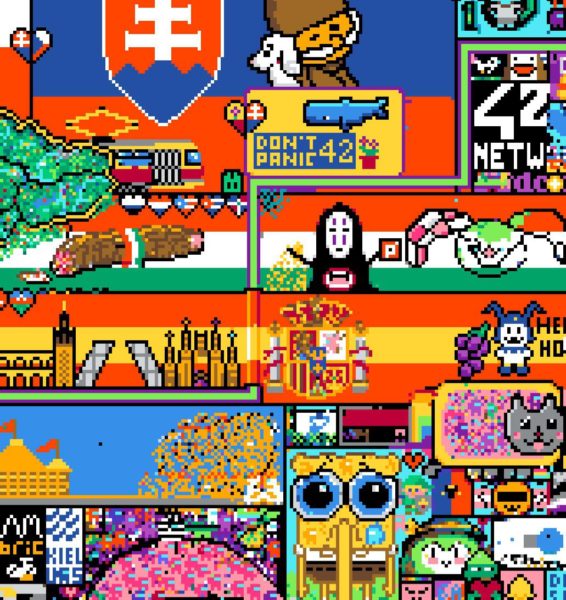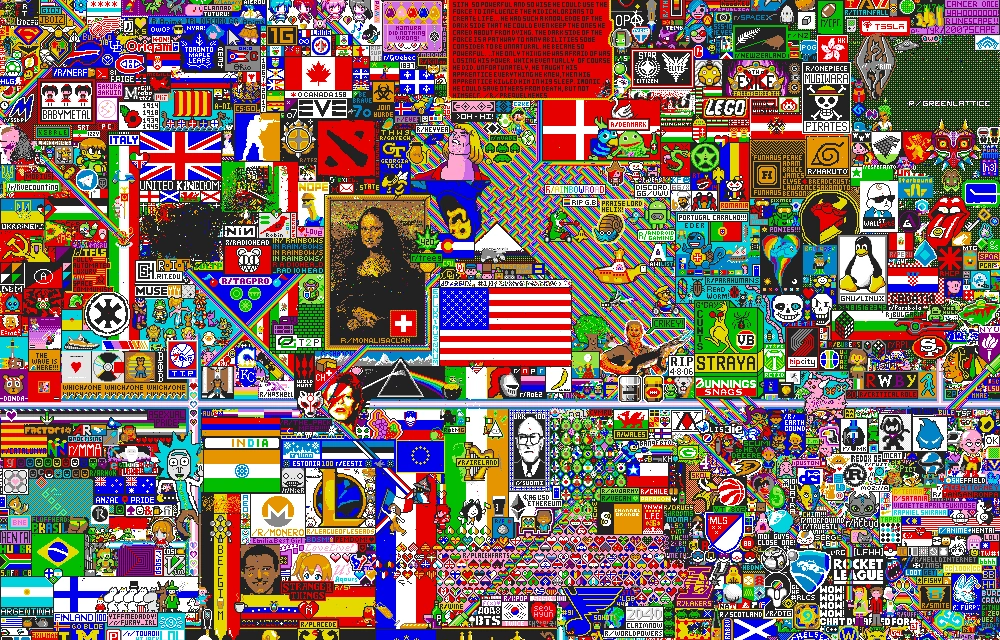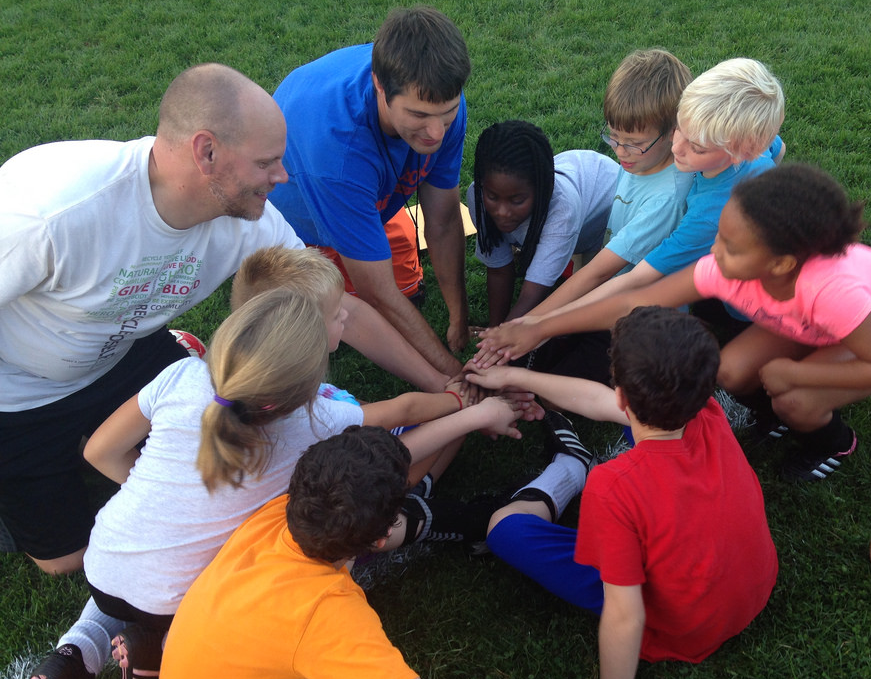‘Learning by doing’ is a motto you may have heard but of late, I’ve become interested in ‘learning by undoing’.
Toy hacking is not a new idea and that can be a fruitful exercise. But, what about taking apart something you made yourself? What about undoing something an entire class or an entire school made together? Would it require the same knowledge or skills? What can be learned from taking apart the very things we built together?
Learning Together
Seymour Papert describes the impact that making has on the learning process. Repeating an action internalizes the process; it develops “knowledge structures” in the learner, especially when learners are aware they are constructing a “public entity, whether it’s a sand castle on the beach or a theory of the universe” (1991, as cited in Ackermann, 2001). I would add social media accounts to the list of public entities, especially as we increasingly rely upon the internet (and each other) to develop public and private identities and personalities.
One social media experiment that took place on Reddit recently piqued my interest about the learning potential for group projects that are destroyed by their creators.
r/place
 In essence, r/place was an online collaborative social experiment where users could alter individual pixels on a blank canvas, using one of 16 colours. Millions of users flocked to the site and what emerged was a rich cultural tapestry suffused with inside jokes, nationalism, memes, gaming avatars, low-brow trolling (pauvre Canada!), and even sophisticated paintings like the Mona Lisa or Starry Sky.
In essence, r/place was an online collaborative social experiment where users could alter individual pixels on a blank canvas, using one of 16 colours. Millions of users flocked to the site and what emerged was a rich cultural tapestry suffused with inside jokes, nationalism, memes, gaming avatars, low-brow trolling (pauvre Canada!), and even sophisticated paintings like the Mona Lisa or Starry Sky.
You can watch the full timelapse of the 2nd experiment that took place this year. It is incredibly unique and dynamic. You can also scrub through the entire four-day experiment here. (Try zooming in at any time – so! much! detail!). My favourite art happened over time, like when a house caught on fire and a firetruck had to put it out.
Easy Come, Easy Go
In the 2nd experiment of r/place, a few changes were introduced that, to me, took on the trappings of a sacred Tibetan sand mandala. This Buddhist religious practice is highly ritualistic and dwells upon impermanence, creation, and destruction. It begins with a ritual of creation.

Quinn Comendant (2017). Source: https://www.worldhistory.org/image/6519/kalachakra-mandala/. License: https://creativecommons.org/licenses/by-sa/4.0/
First, you need a space. This time, r/place expanded beyond a single canvas. In total, four new digital sheets were added, one at a time, without any prior notice.
Second came the symbols, the art, the borders, and boundaries. Raids upon the white void were organized as communities vyed for position and visibility.
Third, the shading, accents and interweaving of subjects. Each day, these steps played out in that order, just like a Tibetan sand mandala. Wash, rinse, repeat.
Finally, a ritual of destruction. By the fourth day, it was over. A single, subtle change signalled the end. Instead of the coloured tiles, only one option would remain: white. Everyone who participated would now be directly involved in the dismantling of r/place. Since the VOID already existed as a nebula of darkness, it was dubbed the anti-void, the end of r/place.
At the time, I was struck by the magnificence of this design choice. Other communities felt it too and all the jockeying for position, the tribalism, and territorialism faded away into a shared awe for the project and the experience. After a Tibetan sand mandala is crafted and enjoyed by the community, it is also ritualistically destroyed via sweeping.
The lead monk then draws a line vertically through the mandala and then another horizontally either with a ritual object or his finger, ruining the work. The other monks then participate in its destruction, pushing the sand around into a heap…[M]ost of the sand is brought to a running stream where it is ritually poured into the waters and swirls away to bring blessings to all the world (Mark, 2021)
In a world of increasing uncertainty, an appreciation for loss and impermanence may build much-needed resilience. Detachment from the product can sanctify the process.
Novel Digital Competencies
While the digital competency required to participate was minimal (i.e. place a tile), organizing a community around a single image demanded a variety of social, diplomatic, artistic, mathematical, and technological skills.
![]() What was remarkable to observe was the way that users needed to interweave these skills to have any social impact. Due to the size of r/place and the number of users however, no single individual could leave their mark. Alone, I was powerless but together, I could help defend the trans flag from trolls and misanthropes. This led to the rapid prototyping of pixel-based blueprints that could help communities organize their drawings and their plan of attack.
What was remarkable to observe was the way that users needed to interweave these skills to have any social impact. Due to the size of r/place and the number of users however, no single individual could leave their mark. Alone, I was powerless but together, I could help defend the trans flag from trolls and misanthropes. This led to the rapid prototyping of pixel-based blueprints that could help communities organize their drawings and their plan of attack.
In order to carve out a space for your meme, it was necessary to work together. Livestreamers, adept at public speaking, commanded massive influence over their audiences. At one point, a French politician even rallied digital troops to the front lines, truly seizing on the greatest issue of our time (I kid).
Community organizers familiar with Discord, Zoom, and other digital apps timed raids between users across the world in order to dominate opposing factions. Programmers developed overlays to help users update the correct colours, in the correct order. Artists drew inspiration from one another and complemented each other’s art. My favourite art was symbiotic, such as in this exquisite corner.
 At the end of the day, this sort of experiment on this scale is not reproducible in a single classroom. However, I believe there are several meaningful take-aways as we adapt our pedagogy to the needs of the future.
At the end of the day, this sort of experiment on this scale is not reproducible in a single classroom. However, I believe there are several meaningful take-aways as we adapt our pedagogy to the needs of the future.
-
- Multidisciplinary engagement can be enabled by student-centered goals (i.e. creating dank memes).
- Learning tasks can explicitly emphasize process over product even to the point of destruction.
However, I wouldn’t want to leave you with the impression that everyone who participated in r/place was necessarily a part of a community of learners. For those engaged by the project, a self-sorting process between the needs of the community and available skill sets would have led to mentoring circles and ad-hoc instruction. But for others, it was likely more of an entertaining side show.
As we pass the Point of No Return for climate change, the youth of today and tomorrow will inherit issues that we cannot even begin to fathom. Learning experiences that emphasize an orientation towards community support, the value of shared meaning-making, the power of diplomatic reasoning, and the utility of multidisciplinary application of digital competencies will empower learners to find answers relevant to them and their communities.
References
Ackermann, E. (2001). Piaget’s constructivism, Papert’s constructionism: What’s the difference. Future of learning group publication, 5(3), 438.
Mark, J. (2021, July). Tibetan sand mandalas. World History Encyclopedia. https://www.worldhistory.org/article/1052/tibetan-sand-mandalas/






I really enjoyed this blog…well done Michael. I wish more people would comment or add to the discussion. Blogs are meant to stimulate and provoke,